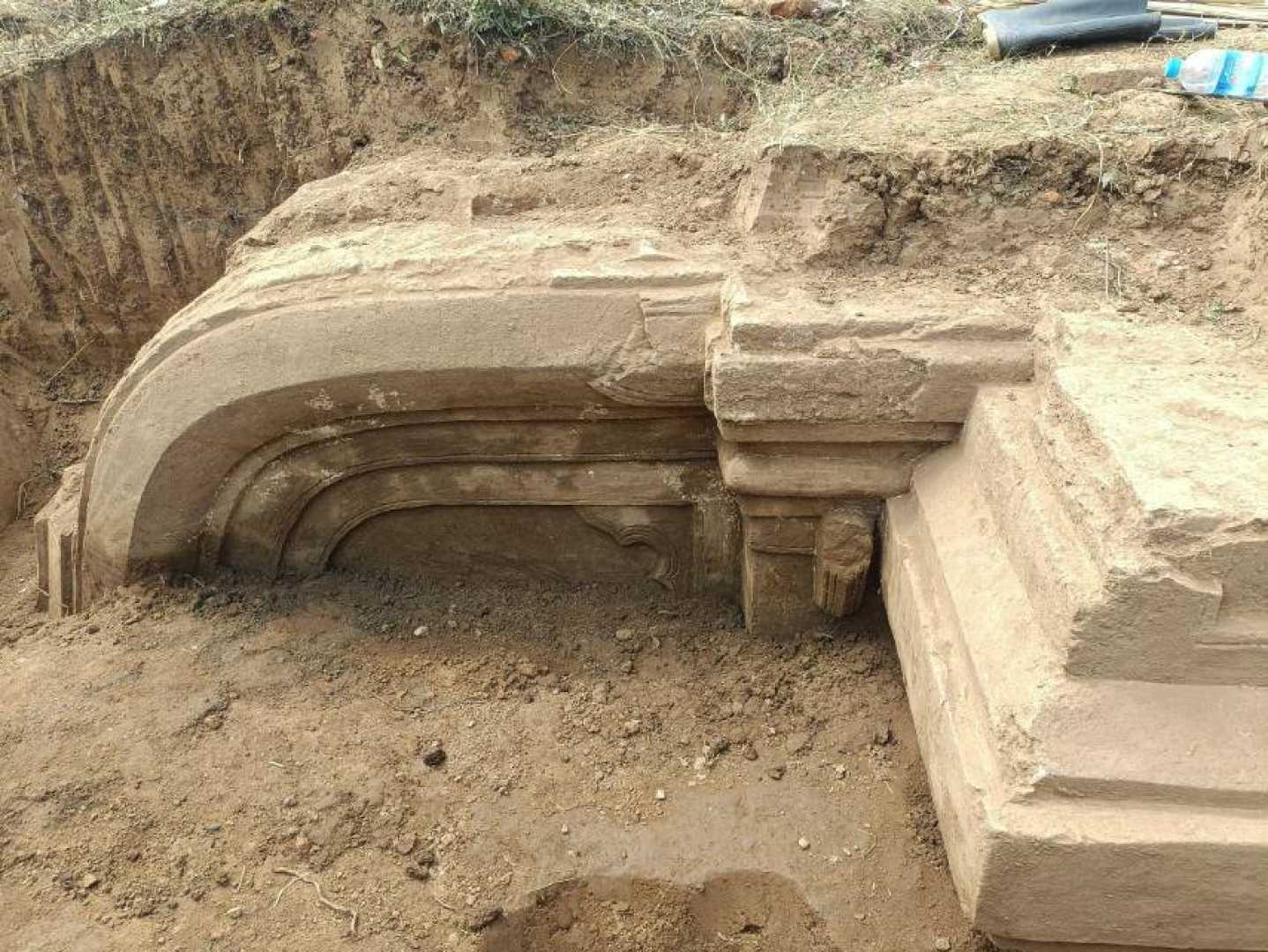News
Ancient Royal Palace Ruins Unearthed After Myanmar Earthquake

MANDALAY, Myanmar — Following a devastating 7.7-magnitude earthquake on March 28, 2025, new archaeological discoveries have emerged in Tada-U Township, revealing the remnants of an ancient royal structure from the Konbaung Dynasty. The earthquake not only caused significant destruction and loss of life, but it also triggered geological shifts that uncovered long-buried ruins near Inwa, about 10 kilometers from Mandalay.
According to a report from the Department of Archaeology and National Museum, the newly unearthed buildings are thought to be part of a royal water residence dating back to the Konbaung era. Initial hints of the site were discovered in 2009 when local residents stumbled upon remnants of a staircase while engaged in brickmaking. However, it was the recent earthquake that uncovered deep fissures, revealing further architectural features that had been hidden for centuries.
Field excavations were initiated on April 6, 2025, by the Mandalay branch of the Department of Archaeology. Excavation findings include significant elements such as a handrail from the eastern staircase, brick platforms, and precise measurements of the site, including a 10-foot-6-inch-long platform and an 18-inch riser step. Although there was initial speculation regarding the site’s association with the “royal water pavilion” noted in historic palm-leaf manuscripts called “Pura-pike,” further investigations suggest a less ambitious interpretation.
The palm-leaf manuscripts, attributed to Minister Letwe Nawrahta during King Hsinbyushin’s reign, describe a majestic structure with multiple staircases and numerous halls shaded by mango trees. But current archaeological assessments indicate that the discovered ruins likely represent a wooden residence measuring between 200 to 250 feet in length, built using traditional Burmese construction techniques.
Experts believe this structure may resemble other historically significant monastic buildings, such as the Bahakara Monastery in Inwa and the Golden Palace Monastery in Mandalay. It is thought to have played a role in royal rituals, including the Thingyan Water Festival and ceremonial hair-washing, which contributed to the cultural and spiritual life of the Konbaung court.
Initially a vibrant capital known as Ratnapura Ava, the area has a complex history, marked by destruction and rebuilding over the centuries. The Konbaung Dynasty, also referred to as the Third Burmese Empire, ruled from 1752 until its annexation by the British Empire in 1885. Ratnapura Ava, the dynasty’s capital, was eventually abandoned after a series of catastrophic earthquakes in 1839.
The newly revealed structure stands as a crucial link to Myanmar’s rich royal heritage, and ongoing conservation efforts are being initiated to protect the site for educational and cultural purposes.
As excavation efforts continue, hopes are high for additional archaeological insights into the Konbaung era and the larger context of Myanmar’s history.












